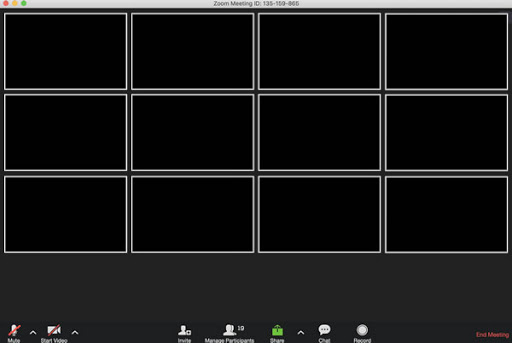In general, we’re pleased with the responses on the peer evaluation surveys, and it is clear that most students have respect for and are valuing the interactions with their cohortmates. But, one thing we’ve heard from some of your peer evaluation surveys, and also felt ourselves, is the difficulty forming a connected community in this on-line environment.
Groups that knew each other and were used to working together pre-pandemic usually were able to move to on-line environments fairly well, and the personal connections already established in the easier in-person environment translate to the on-line environment. I’ve seen similar things in comparing groups that have nearly all of their interactions on-line but have one or two in-person meetings a year, to ones that never meet in person. Without the in-person meetings, the level of familiarity and comfort that comes from feeling like you know who someone is are very hard to attain.
This makes the challenge of forming a community with your cohort, which for most of you is with people you have never met in person, especially difficult (and perhaps exaccerbated by the additional stress you might feel about being graded during the assessed cohort meetings, although we really don’t want this to be stressful).
One thing that is a big factor in how well group video meetings work is correlated with having cameras on. From the now thousands of group on-line meetings we’ve been, with groups ranging from 3 up to several hundred people, the biggest thing that seems to impact the quality of the meeting is whether or not most people have their cameras on. I’ve (Dave) seen similar things from observing my daughter’s classes and activities — some require everyone to have their camera on all the time, others do not allow anyone to turn their camera on. There are very good justifications for each of these policies, but the cameras-off meetings lead to stale, non-interactive environments, where no one forms any connections.
Having cameras on allows interactions that aren’t possible with audio only — mid-meeting high fives, playing rock-paper-scissors, raising hands, showing interest, showing confusion, showing pets, celebration dances, etc. Video also helps make people seem like humans, not just voices in the ethernet.
That said, we don’t want to require or pressure anyone to turn their camera on during the cohort meetings, and as we said at the beginning of the course, we don’t want anyone pressuring your cohortmates to turn cameras on. There are lots of “good” reasons why someone would decide to keep their camera off, such as:
-
Not having an adequate and private place to use to join the meeting and being worried about things that might be seen in your background.
-
Being anxious about how you look on camera, or fearing that people will judge your ideas differently if they can see you (we really hope this would not happen with people in our class, but that doesn’t make the fear of it less valid, especially when it does happen in lots of other environments).
-
Not having enough bandwidth to have good audio and video at the same time and prioritizing audio.
-
Not having a working camera.
But, there are also lots of “bad” reasons why people prefer to keep their cameras off during a meeting:
-
Not wanting to reveal if you are falling asleep, distracted, bored, or confused. (All of these are important visual clues for the other people in the meeting that, although not always pleasant to see, are very valuable to know.)
-
Wanting to be able to only partially engage in the meeting, and to be able to do other things without being noticed. We sympathize with this reason for many meetings we attend, but for the cohort meetings we really want everyone to be fully engaged and participating, even during times when others are speaking.
-
Wanting to be able to “hide” and lurk in a meeting, without contributing to it.
-
Not wanting to be the first one in the meeting with a camera on. This is a tough one, and understandable, but also the reason why small group meetings that start with about half of the people with cameras on, tend to devlolve into meetings with no cameras on. It feels awkward to be the only one in a meeting with camera on since it seems like everyone is looking at you and you have no one to look at. But, try and stick it out and hope that if you do, others will join. We would also suggest that there is a way to encourage others to turn on their cameras without pressuring any individual to do so: “If I turn on my camera, will anyone join me?”
It isn’t possible for us, or your cohortmates, to distinguish between the “good” and “bad” reasons you might not be willing to have your camera on. On the other hand, my guess is the vast majority of students who have their cameras off, it is for a “bad” reason not a “good” one.
We don’t want anyone to feel any individual pressure to turn their camera on since we know some people do have valid reasons not to. But, we hope that people who are turning their camera off for “bad” reasons, will consider that although it is an immediate sacrifice personally to turn on your camera, it is a community benefit that will, in the long run end up being a personal benefit also.

